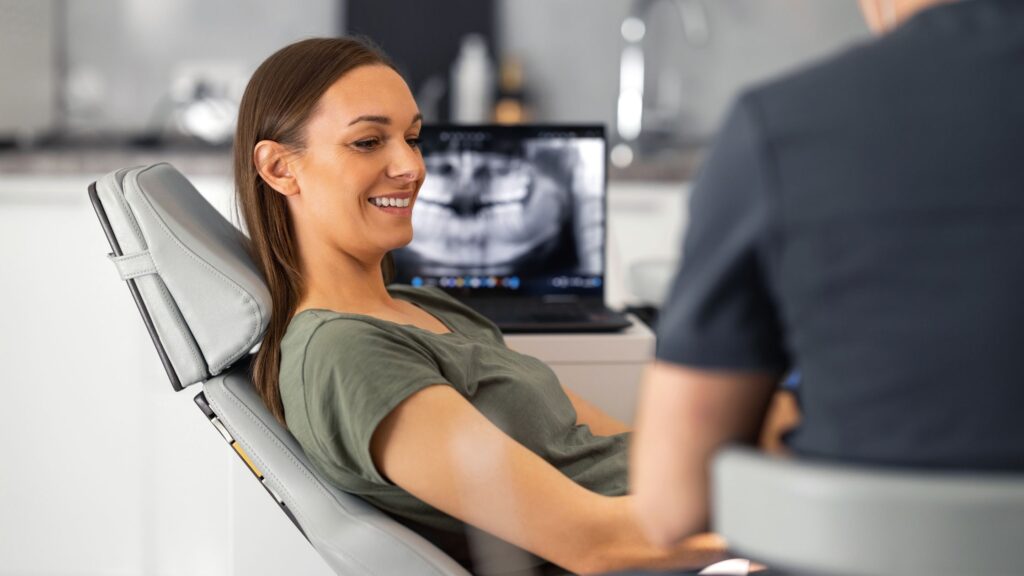Overbite: An overbite occurs when the upper front teeth excessively overlap the lower front teeth. While a small overlap is normal, a significant overbite can cause issues like gum irritation, wear on the lower teeth, and joint problems.
Underbite: An underbite is characterised by the lower front teeth extending beyond the upper front teeth. This can lead to difficulties in biting and chewing, speech issues, and increased wear on the teeth.
Cross-bite: A cross-bite occurs when some of the upper teeth sit inside the lower teeth when the mouth is closed. This can happen on one or both sides of the mouth and can lead to tooth wear, gum disease, and asymmetrical jaw growth.
Orthodontics has come a long way, and today, there are several treatment options tailored to address specific bite issues. The choice of treatment depends on the severity of the condition, the patient’s age, and their overall dental health.
1. Traditional Braces: Traditional metal braces are a time-tested solution for correcting bite issues. They consist of brackets attached to the teeth, connected by wires that are periodically tightened by the orthodontist to gradually move the teeth into the desired position. They are effective for treating all types of bite problems, including severe cases.
2. Ceramic Braces: Similar to traditional braces, ceramic braces use clear or coloured brackets for a less noticeable appearance. They offer the same effectiveness in treating bite issues but are preferred by patients looking for a more aesthetic option.
3. Clear Aligners: For mild to moderate bite issues, clear aligners like Invisalign are a popular choice. These are nearly invisible, removable trays that gradually move the teeth into place. They offer the convenience of being able to eat and clean your teeth without braces but might not be suitable for more severe cases.
4. Palatal Expanders: For patients with a cross-bite, a palatal expander can be used to widen the upper jaw so that the upper teeth can properly overlap the lower teeth. This device is typically used in children whose jaws are still growing.
5. Surgery: In adults with severe bite issues and skeletal discrepancies, orthodontic treatment may need to be combined with jaw surgery. This is considered only in cases where orthodontic appliances alone cannot correct the bite.
The orthodontic treatment process begins with a thorough examination, including X-rays, photographs, and impressions of the teeth. This helps the orthodontist develop a personalised treatment plan. Throughout the treatment, regular check-ups are essential to monitor progress and make adjustments as needed.

Image Credit: Canva
Overbite, underbite, and cross-bite are not just cosmetic issues; they can lead to significant oral health problems if left untreated. Thankfully, orthodontics offers a range of solutions to effectively address these conditions. If you suspect you have a bite issue, consulting with an orthodontist is the first step towards a healthier, more functional, and aesthetically pleasing smile.
Remember, every patient’s situation is unique, so it’s important to get a personalised consultation to determine the most effective treatment plan for your specific needs. With the right approach, orthodontics can transform not just your smile, but your overall oral health and well-being.
© Copyright 2025 Poppies Dental Care Privacy Policy Cookies Policy Website Design by Pivotal Marketing